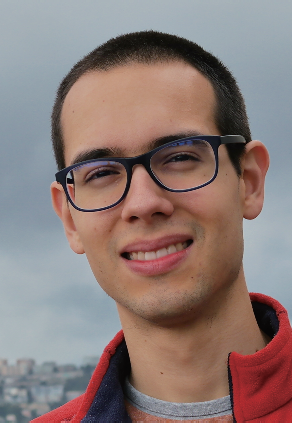Leonardo B. Coelho, Daniel Torres , Vincent Vangrunderbeek, Miguel Bernal
Gian Marco Paldino, Gianluca Bontempi, Herman Terryn, Jon Ustarroz
ChemSIN - Chemistry of Surfaces, Interfaces and Nanomaterials, Universite libre de Bruxelles,
Brussels, Belgium
Research Group Electrochemical and Surface Engineering (SURF), Vrije Universiteit Brussel,
Brussels, Belgium
Machine Leaming Group (MLG), Universite libre de Bruxelles (ULB), Brussels, Belgium
EXTENDED ABSTRACT: Predictiicting m! corroscorrosion ion faifailure, lure. oartiparticularly cularlv i in passive systems, is complex due to their vulnerability to aggressive species like Cl-, which can cause pitting corrosion. Traditional lab-scale corrosion tests often show poor correlation with real-world conditions. This unpredictability is a challenge for modelling, but recent advances in Machine Learning (ML) offer new data-driven approaches[!]. Our research proposes using Scanning Electrochemical Cell Microscopy (SECCM) as a high throughput tool to collect corrosion activity from randomly probed locations on 316L SS. In the presence of Cl-, potentiodynamic polarisation tests triggered the development of pitting corrosion. Data science methods were deployed to handle and explore 955 j Vs E curves. Unimodal and uniform distributions were assigned to the passive and pitting regions. Our "big-data" local strategy revealed a potential-dependent log(j) distribution, with the randomness increasing with testing aggressiveness[2]. Furthermore, a hybrid rule-based/ML approach using linear regression and artificial neural networks (ANN) determined pitting corrosion descriptors from the high-throughput data. Non-parametric density estimation determined the central tendencies of the Epit/log(jpit) and Epass/log(jpass) distributions. Comparative analysis of descriptors using conditional mean or median curves showed that conditional medians yield more accurate results [3].
Keywords: pitting corrosion; machine learning
REFERENCES
[1] Vangrunderbeek, V. et al. Corrosion Science. 225, 111619 (2023).
[2] Coelho, L. B. et al. Corrosion Science. 217, 111104 (2023).
[3] Coelho, L. B. et al. npj Materials Degradation. Degrad. 7, 82 (2023).

Leonardo B. Coelho earned his PhD in 2018 from UMons, Belgium, and completed postdoctoral studies at VUB, focusing on corrosion inhibitors at Arteco's R&D lab. He is now a postdoc fellow at ULB, specializing in ML for pitting corrosion prediction. He holds a MicroMasters in Statistics and Data Science from MIT. His publication record includes over 25 papers in renowned journals, featuring collaborations with international institutions such as the University of Lisbon, Tu Delft, Northwestern University, and USTB.